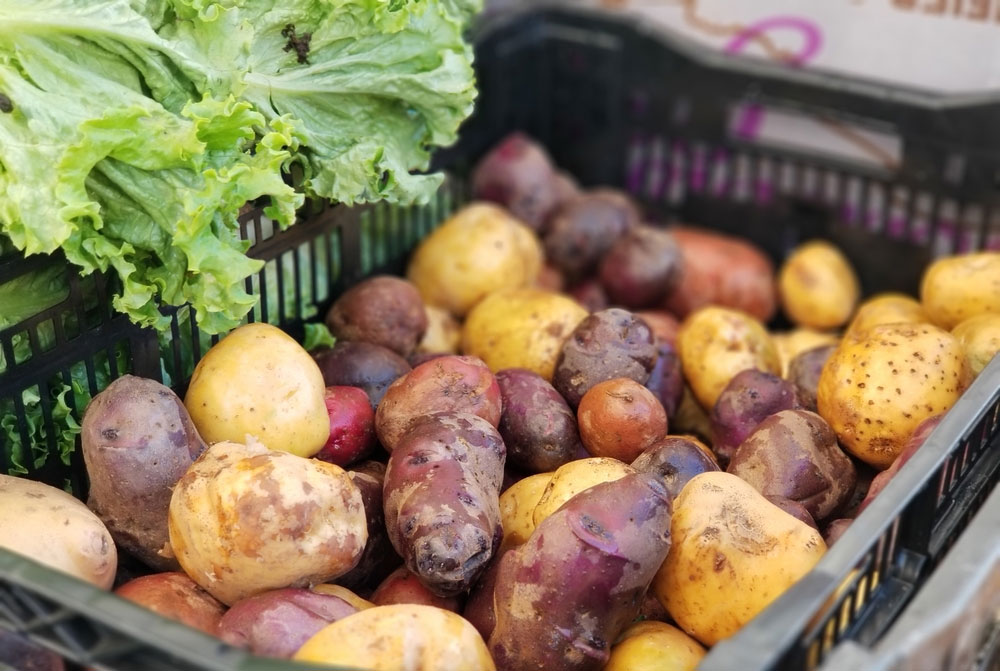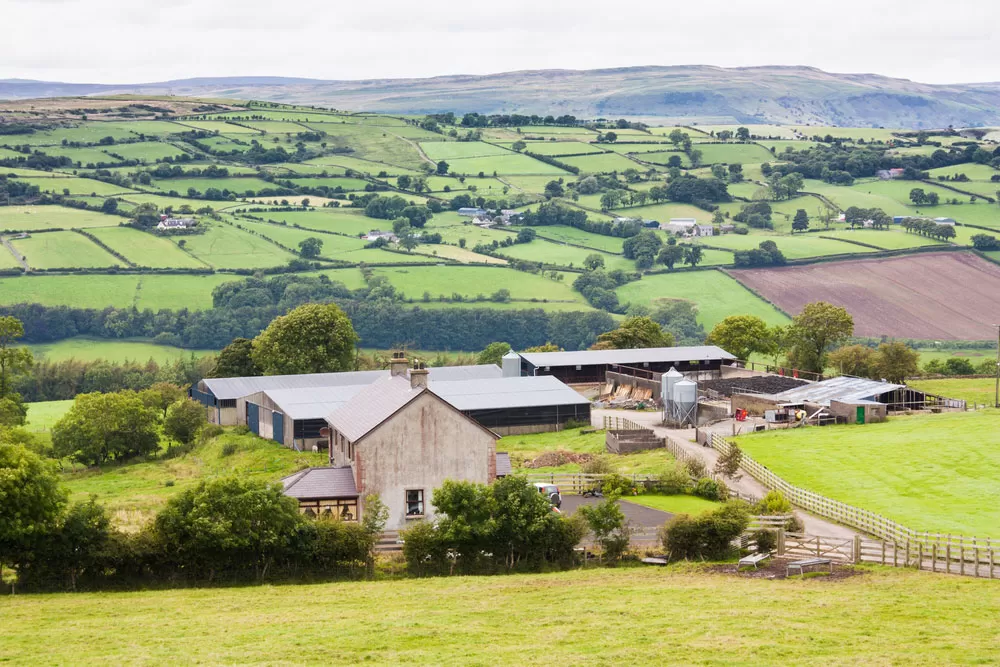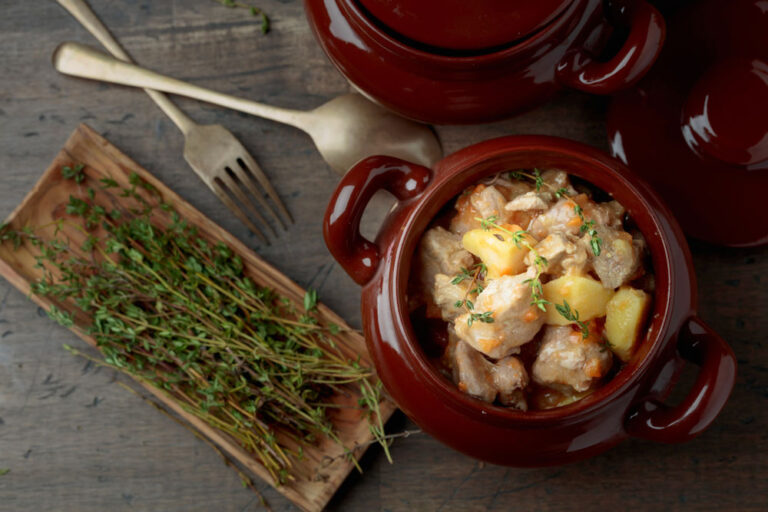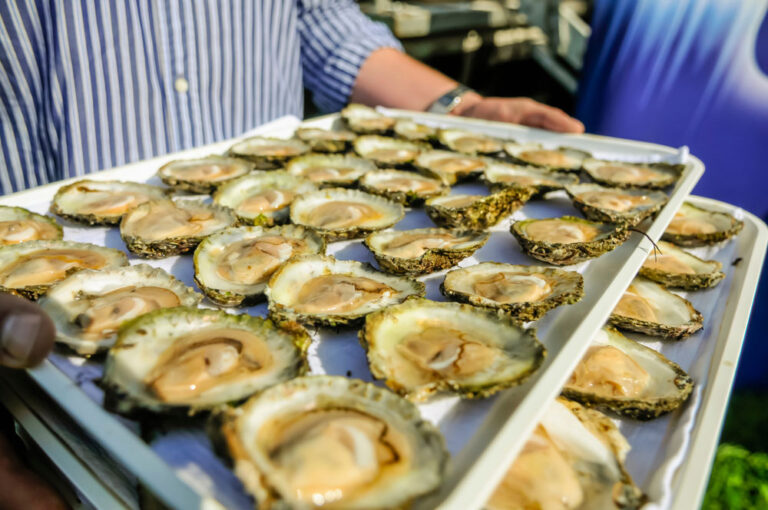Ireland has a long agricultural past, and its local cuisine scene reflects this tradition. Ireland’s various landscapes, from lush meadows to craggy coasts, provide a plethora of fresh, seasonal foods that excite chefs and food lovers alike. Let’s take a journey of food in Ireland from farm to table, emphasizing some of the country’s most beloved meals and culinary traditions.
Farming Traditions
The farming history in Ireland is strongly embedded in the country’s cultural and economic character. Agriculture has played an important part in the history of the country and has supported rural communities for millennia. With its excellent soil, warm temperature, and abundant rainfall, Ireland’s terrain is ideal for farming. This has enabled the country to cultivate and raise a varied range of crops and livestock.
Dairy farming is a pillar of Ireland’s agricultural business, and it has a long history in County Cork, which is located in the country’s southwest. Cork is home to many huge dairy farms that provide milk to the country’s main processors. Several of these farms have been passed down through generations of the same family, and the farmers take great pleasure in their milk’s quality. Cork’s beautiful green meadows are perfect for grazing cows, and this is reflected in the region’s high-quality milk.
Potato cultivation has also played a significant role in Ireland’s agricultural history, and County Donegal in the country’s northwest has a long history of raising this key crop. For ages, potatoes have been a staple sustenance in Ireland, and the crop has supported rural populations during times of famine and misery. Currently, many small-scale farmers in Donegal use traditional ways to raise potatoes, and the region’s potatoes are known for their flavor and texture.
Agricultural techniques in Ireland have developed over time, with new technology and methods being implemented to increase efficiency and output. Many Irish farmers, however, continue to use traditional methods and practices such as crop rotation, animal husbandry, and manual labor. Sustainable agriculture is becoming increasingly important in Ireland, with many farmers embracing policies that stress environmental stewardship and animal welfare.
Ireland’s farming heritage is a rich and diversified tapestry of agricultural methods and skills that have sustained rural communities for millennia. The country’s landscapes and natural resources have permitted a robust agricultural business that continues to expand and adapt today, from dairy farming in County Cork to potato cultivation in County Donegal.
The Scene at the Local Market
The local market scene in Ireland is a dynamic and buzzing center of activity, allowing visitors to experience the country’s greatest products and engage with local farmers, producers, and craftsmen. Ireland’s markets, from traditional farmers’ markets to artisanal food halls, celebrate the country’s rich culinary heritage as well as the passion and expertise of its producers.
The English Market in Cork City, located in the south of Ireland, is one of the most well-known marketplaces in the country. The market has a long and illustrious history, dating back to 1788, and is situated in a lovely Victorian edifice in the city center. Many kiosks provide a broad range of fresh food, including meat, fish, cheese, veggies, and artisanal bread. Guests may enjoy local delicacies like Cork’s famed spiced beef or purchase groceries for a picnic or home-cooked supper.
The Temple Bar Food Market in Dublin, Ireland’s capital city, is a favorite destination for foodies and residents alike. The market, which is located in the historic Temple Bar neighbourhood, is a dynamic mix of traditional Irish products and cosmopolitan cuisines. Visitors may peruse the artisanal kiosks, which sell anything from freshly baked bread and pastries to locally crafted cheeses and preserves. There are also kiosks selling foreign delicacies like falafel and sushi, representing Dublin’s multicultural culinary culture.
Other notable markets in Ireland include Belfast’s St. George’s Market, which has been in operation since the 1890s and is famous for its fresh seafood and locally grown produce, and Galway’s Latin Quarter Market, which is held every weekend and features a diverse array of stalls selling everything from jewelry and crafts to locally produced honey and artisanal cheese.
Ireland’s markets are a social centre where tourists can meet with other food enthusiasts and immerse themselves in the country’s gastronomic culture, in addition to offering a platform for local producers to promote their products. The local market scene is a must-visit site for anybody interested in the country’s thriving food culture, whether you’re a seasoned foodie or just looking to sample some of Ireland’s greatest products.

The Seafood Industry
The seafood industry in Ireland is an important element of the country’s economic and culinary history. The nation offers a vast quantity of marine life, including a variety of fish, shellfish, and crabs, with over 7,500km of rough coastline. Ireland’s seafood industry is diversified, ranging from small-scale, family-run companies to big commercial fisheries that ship to markets worldwide.
Galway Bay, on Ireland’s west coast, is famed for its delicious oysters, which have been picked for generations from the bay’s nutrient-rich waters. Many oyster farms, many of which have been in business for generations, may be found in the area. The oysters are produced in bay beds, and their distinct flavor is determined by water temperature, salinity, and other environmental conditions. Visitors to Galway may try these delectable oysters in local eateries or during the annual Galway International Oyster Festival, held in September.
Another seafood dish famous in Ireland is smoked salmon, and the Burren Smokehouse in County Clare is one of the country’s top producers. The smokehouse, which opened in 1989, employs traditional smoking techniques to produce some of the best smoked salmon available. The salmon is cold-smoked over beechwood chips after being cured with a combination of salt, sugar, and spices. The end result is a subtle, smokey taste that seafood lovers all around the world like.
Other famous seafood items in Ireland include Bantry Bay mussels, Aran Islands lobster, and Irish Sea prawns. These goods are appreciated for their freshness and taste and are collected by local fisherman using traditional, sustainable techniques.
Climate change, overfishing, and Brexit-related trade disruptions have all posed problems to the Irish seafood sector in recent years. The sector, on the other hand, has demonstrated resilience and adaptation, with many fishermen and seafood producers adopting sustainable fishing techniques and finding new markets for their goods.
Overall, the Irish fish business exemplifies the country’s natural riches, cultural tradition, and culinary inventiveness. Whether you’re a seafood connoisseur or simply seeking to experience some of the country’s best dishes, Ireland’s seafood is not to be missed.
Traditional Recipes
Irish cuisine has a long and diverse history that has been affected by the country’s agricultural past, local products, and cultural customs. Several traditional Irish meals have their origins in the country’s agricultural past, when supplies were scarce and inventiveness was essential.
Irish stew, a substantial and comforting dinner cooked with lamb, potatoes, carrots, and onions, is one of the most famous Irish foods. The stew was traditionally made with poorer pieces of beef that were slow-cooked to tenderize and add a rich, flavorful taste. Nowadays, Irish stew is a popular dish on many restaurant menus and is frequently paired with crusty bread. (View Recipe)
Boxty, a sort of potato pancake prepared with grated potatoes, flour, and buttermilk, is another popular meal. Boxty was a popular delicacy in rural areas and has been a mainstay in Irish cuisine for generations. Boxty is now available in a variety of shapes, ranging from basic potato cakes to more complex ones loaded with savory toppings such as cheese, bacon, or smoked salmon. (View Recipe)
Colcannon is another another classic traditional Irish meal. It’s a simple yet tasty dish made with mashed potatoes, cabbage or kale, butter, cream, and salt. Colcannon is commonly served as a side dish with meat or fish, but it also makes a filling and robust dinner on its own. (View Recipe)
Other classic Irish foods include bacon and cabbage (boiled bacon, potatoes, and cabbage – view recipe), coddle (sausage, bacon, and potatoes – view recipe), and champ (mashed potatoes with scallions or spring onions – view recipe).
In recent years, there has been a resurgence of interest in traditional Irish food, with chefs and amateur cooks both delving into the country’s culinary legacy and modernizing old recipes. As a result, the food scene has become more lively and fascinating, with fresh adaptations of old classics appearing on restaurants around the country.
Traditional Irish foods, in general, are a significant component of the country’s cultural legacy, providing a tasty and comforting flavor of Ireland’s past. Traditional Irish foods are not to be missed, whether you want to taste some classic Irish stew or a new take on an old favorite.
The Contemporary Culinary Scene
Ireland’s culinary industry has witnessed a revolution in recent years, with a new breed of chefs and food entrepreneurs reshaping the country’s food culture. These chefs are fusing traditional Irish ingredients and techniques with current culinary trends, resulting in unique and fascinating new dishes that are putting Ireland on the map of the world’s food.
The rise of a handful of Michelin-starred restaurants has been one of the most exciting events in the current Irish culinary landscape. Some restaurants, such as the Michelin-starred Greenhouse in Dublin, serve up inventive, high-end meals that highlight the finest of Irish ingredients, such as Irish beef with truffle and oyster mushrooms.
At the same time, an increasing number of street food sellers, pop-ups, and food markets are driving the Irish culinary scene. These vendors are frequently young and imaginative cooks experimenting with new flavors and ingredients and providing a new perspective to traditional Irish food. The Bao House in Dublin, for example, is a renowned street food seller that serves a combination of Irish and Asian cuisines, such as crispy duck bao buns and Irish beef with kimchi.
Another current Irish cuisine trend is the emphasis on sustainability and locally produced foods. Several of Ireland’s greatest chefs are dedicated to collecting ingredients from local farmers, fishermen, and producers and crafting meals that highlight the best of what the nation has to offer. Because of the emphasis on sustainability and ethical sourcing, there is a rising interest in plant-based and vegetarian food, with many restaurants now serving unique and delectable plant-based dishes.
Generally, the current Irish culinary landscape is alive and interesting, with a diverse range of restaurants, chefs, and food vendors challenging traditional Irish cuisine and exhibiting the country’s culinary legacy in novel and fascinating ways. Whether you’re a foodie seeking for the newest culinary trends or just want to discover Ireland’s rich and varied food culture, the current Irish culinary scene has something for everyone.



